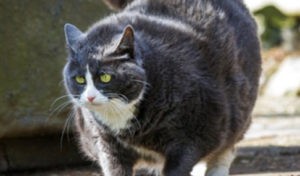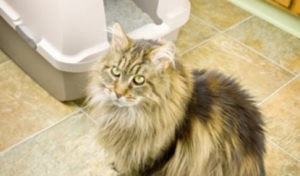 Dogs and cats alike can be affected by conjunctivitis, an inflammation of the tissues surrounding the inner eyelids and white part of the eyes that sometimes accompanies a respiratory infection or eye injury. It can also be brought on by airborne irritants, dry eye, or a more serious illness such as canine distemper or feline herpesvirus.
Dogs and cats alike can be affected by conjunctivitis, an inflammation of the tissues surrounding the inner eyelids and white part of the eyes that sometimes accompanies a respiratory infection or eye injury. It can also be brought on by airborne irritants, dry eye, or a more serious illness such as canine distemper or feline herpesvirus.
Symptoms include goopy or bloodshot eyes, swollen eyelids, and rubbing of the eyes. Treatment ranges from eye drops and ointments to surgery in rare cases.
Overview
Conjunctivitis is the medical term used to describe inflammation of the conjunctiva — the soft tissues that line the inside of the eyelids and the white portion of the eye.
Conjunctivitis can occur as part of an upper respiratory tract infection, a condition that resembles a common cold. It can also be associated with a localized problem that causes trauma to or irritation of the eyes. Causes include:
Airborne irritants, such as cigarette smoke, dust, and perfumes
Systemic illnesses (illnesses that affect the whole body), such as feline herpesvirus, feline immunodeficiency virus (FIV), canine distemper, and bartonellosis (infection with the bacteria that cause “cat scratch disease” in humans)
Dry eye (aka, keratoconjunctivitis sicca) a medical condition characterized by inadequate tear production)
Entropion (a malformation of the eyelids that causes the edges of the lids to roll inward; the hairs on the eyelids scrape against the eye and cause irritation)
Trauma to the eye, such as a blow
The severity of conjunctivitis will vary dramatically from case to case. Only rarely will blindness result.
Symptoms and Identification
The clinical signs of conjunctivitis vary depending on the severity of the inflammation. Signs include:
Discharge from the eyes (can be pus, watery, or thick, like mucus)
Swollen eyelids
Red, “bloodshot” eyes
Squinting
Rubbing the eyes with a paw or against other objects, such as furniture or the floor
If the conjunctivitis is severe, permanent damage to the cornea (the clear covering on the surface of the eye) can occur.
The medical history and physical examination findings can provide valuable information for your veterinarian. The medical history may include trying to determine how long the conjunctivitis has been going on and whether any other signs of illness have been observed. Physical examination findings may reveal evidence of underlying illness. For example, a cat with an upper respiratory tract infection may have a runny nose, sneezing, and a fever in addition to conjunctivitis.
Diagnosis of conjunctivitis is usually based on physical examination findings. If a pet is squinting because his/her eyes are painful, a veterinarian will often begin the examination by applying a drop of liquid topical anesthetic directly to the eye. This is not painful, and after a few minutes, it numbs the surface of the eye so the examination can proceed. During the examination, the veterinarian will likely look for foreign material, wounds, or other causes of conjunctivitis. Entropion can also be diagnosed during the physical examination.
While examining the pet’s eyes, the veterinarian will often instill fluorescein stain. Fluorescein is a green-tinted dye that fluoresces (glows) under blue light. If the surface of the cornea is intact, the fluorescein dye will not stick to the eye. However, if there is a scratch, ulcer, or wound on the cornea, the dye adheres to the defect and can show your veterinarian where and how serious the injury is. Fluorescein staining is not painful and can provide valuable information about the condition of a pet’s eye.
Testing to determine if tear production is adequate is typical in cases where dry eye (keratoconjunctivitis sicca) is suspected. Similarly, if a systemic illness (such as FIV) is suspected, blood testing or other diagnostic tests may be recommended.
Affected Breeds
Any dog or cat can develop conjunctivitis.
Treatment
Most cases of conjunctivitis are treated with drops or ointments applied directly to the eyes. If the conjunctivitis is associated with another illness, like an upper respiratory infection, antibiotics or other medication given by mouth may also be recommended. In many cases, the eye starts looking better after only a few treatments. However, all medications should be given as directed for the full course of treatment.
If the conjunctivitis is associated with entropion, surgery may be recommended to correct the deformed eyelid. Similarly, if a pet has dry eye, long-term management may be recommended to control the condition.
A veterinarian will typically recommend recheck exams during the course of treatment to monitor how well the condition is responding to therapy. Rarely, a pet will require surgery to remove the eye to prevent further pain, inflammation, and infection.
Prevention
Many causes of conjunctivitis are preventable. For example, minimizing exposure to airborne irritants like cigarette smoke, monitoring pets during play and exercise to reduce the risk of trauma to the eye, and keeping pets current on vaccinations against diseases that can cause conjunctivitis, such as feline herpes virus and canine distemper can reduce the likelihood of developing conjunctivitis associated with these causes.
This blog was written by McQueen Animal Hospital,vet Brampton, an animal clinic (vet hospital/vet clinic) in Brampton committed to providing only the highest level of veterinary care to our beloved pets.



